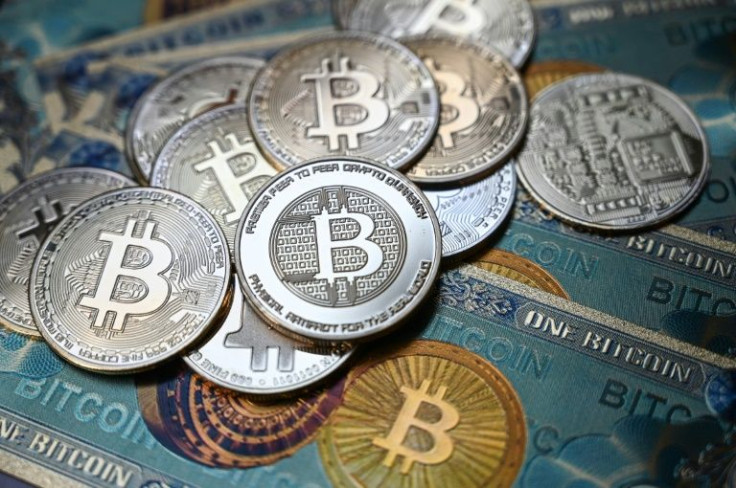What Candlestick Charts Tell Us About Bitcoin’s Next Move

We use three forms of securities analysis to evaluate investments for our clients:
Quantitative: Do the numbers make sense?
Qualitative: Does the story make sense?
Technical: What do other investors think?
We operate on the belief that quantitative and qualitative fundamentals rule the long-term measures of value, while technical factors rule the short-term. An investment might look good on a fundamental basis, but the technicals might indicate to wait for a better entry price later.
Investors have devoted volumes of literature to technical analysis. Let’s consider one method that originated in 1700s Japan, candlestick charts, which we use in our routine investment process.
How Candlestick Charts Work
Homma, a Japanese rice trader, created candlestick charts to analyze rice prices. The human brain more readily comprehends pictures over numbers. Candlestick charts convert multiple axes of data into graphics that convey information, not just data.
Candlestick charts graph an asset’s open/high/low/close price across set intervals of time. One “candlestick” represents one interval of time — an hour, a day, a week.
Each candlestick consists of a bar — a “real body” — with top and bottom marks encompassing the range set by opening and closing prices, and “wicks” extending above and below to indicate the high and low prices for the period.
Candles where the close is higher than the open are colored green (or white). Red (or black) color candles show that the close is lower than the open.
The colors, size and direction of candlestick charts illuminate investor emotion. A small real body denotes little activity and stable emotions. A long real body — positive or negative — denotes a big mood swing.
Showing a trading volume histogram below the price chart adds additional insight. Large trading volumes confirm price direction. A substantial downturn on high volume warns of a bear market.
Charting Bitcoin Using Candlesticks
Let’s analyze an investment – bitcoin – in real time. Metals trading company Kitco displays one of the better candlestick charting systems available online. Google “Kitco Bitcoin” in an adjacent browser and review its chart while reading this column.
At first glance, the chart looks utterly random because the default scale is set to 30 minutes. Reset the scale to “1 week” in the upper-left corner of the chart.
The longer-dated chart extending from 2013 shows many small, incremental gains through 2017, a massive ramp and sell-off from 2018 to 2019, and a period of sideways trading through 2021.
The chart gets interesting in October 2021 when we see a pattern of modest up-week gains turn into enthusiastic, large up-week gains. Anyone who bought bitcoin above the 2020 low of $4,500 has paper profits. In principle, traders should sell into rallies, but 98% of investors increase their holdings in a profitable trade, which is why the up-week rallies get more extreme as prices move higher.
Around January 2021, the “smart money” took some profits, leading to a short sell-off, which naïve investors responded to as a “buying opportunity” to add to their holdings. Over the next six months, bitcoin doubled again, but with less conviction. Big green up-weeks are followed by big red down-weeks as experienced investors use the rallies to unload.
By April 2021, recent bitcoin investors show losses, and the percentage of losers rises sharply with each downturn. These investors rarely have deep pockets and psychologically are ill-prepared to lose money, so now panic selling begins. We see two down weeks in May 2021 when bitcoin fell 50% to the “floor” set by the previous sell-off in January 2021.
From July to November 2021, we see choppy gains to a new all-time high, barely breaking through the “ceiling” established in February to May 2021. New selling begins almost immediately – “smart money” getting out and retail investors selling as soon as their original buys break even. This selling is sustained and precipitous – long, red down weeks with the occasional small, green up week.
In three months, bitcoin fell from an all-time high of $68,958 to a recent value of $33,278, down 52%. What next?
Bitcoin sits on a “floor” of $30,000 to $32,000, defined by the trading lows set in January 2021 and from May to July of 2021.
Should bitcoin trade below $30,000, the next floor dates back to September 2020 at around $10,000.
What’s the probability that bitcoin rallies from current levels to new highs?
Anyone who bought bitcoin prior to January 2021 is still showing some gains. However, anyone who bought bitcoin since January 2021 is at best at breakeven and at worst showing a 50% loss. Sadly, most recent investors are undercapitalized retail investors buying on a hope and a dream. Those investors are most likely to sell with the next decline.
Given our candlestick chart analysis, we rate the probability of gains in bitcoin from current levels as low and the probability of losses from current levels as high.
David Edwards is president and wealth advisor with Heron Wealth, a $500 million registered investment advisor based in New York City working with 225 client families across the U.S. and around the world. Dustin Lowman contributed additional research for this column.
Editor's Note: At the time of publication, Edwards and his clients held no positions in bitcoin or cryptocurrencies of any kind.
© Copyright IBTimes 2024. All rights reserved.





















